Orlando weather: Weekend brings mix of clouds, sun across Central Florida with limited rain

Orlando Weather Forecast: May 3, 2024
Saturday will be a mix of sun and clouds with limited chances for rain. Highs will break into the upper 80s across much of the region.
ORLANDO, Fla. - This weekend promises a mix of clouds and sunshine across Florida. Highs at the East Coast beaches are anticipated to range from the low to mid-80s. Conversely, travelers to the West Coast beaches may encounter a chance of rain.
Inland areas can expect temperatures reaching the upper 80s to near 90 degrees Fahrenheit, with a possibility of pop-up showers or downpours late in the day, particularly west of Interstate 4, with a likelihood of about 30%.
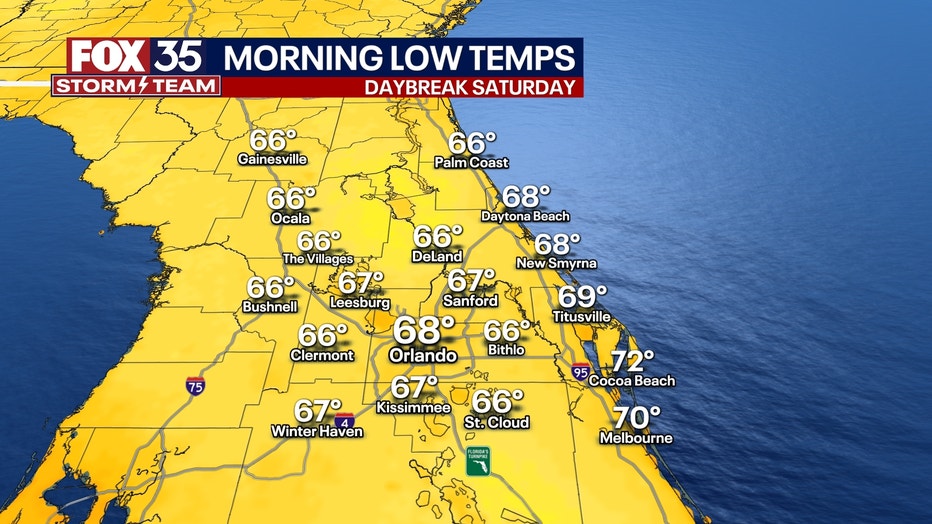

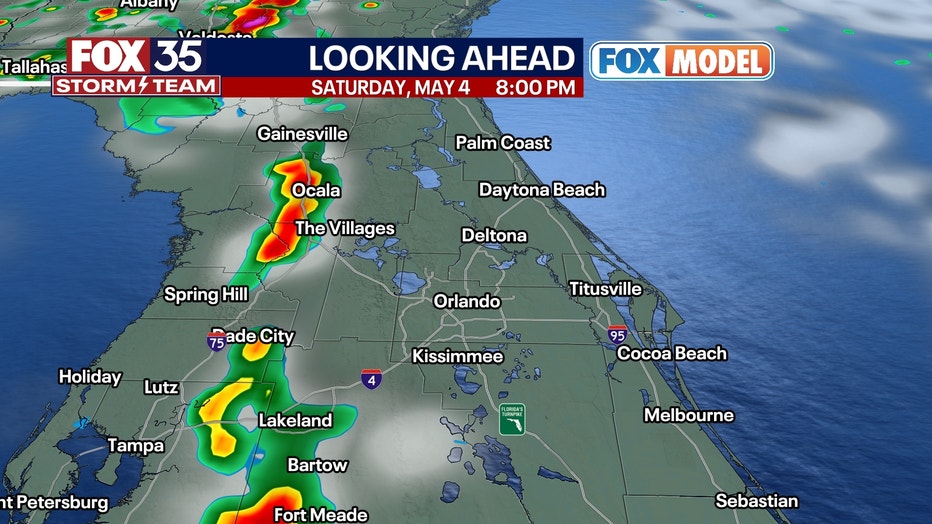
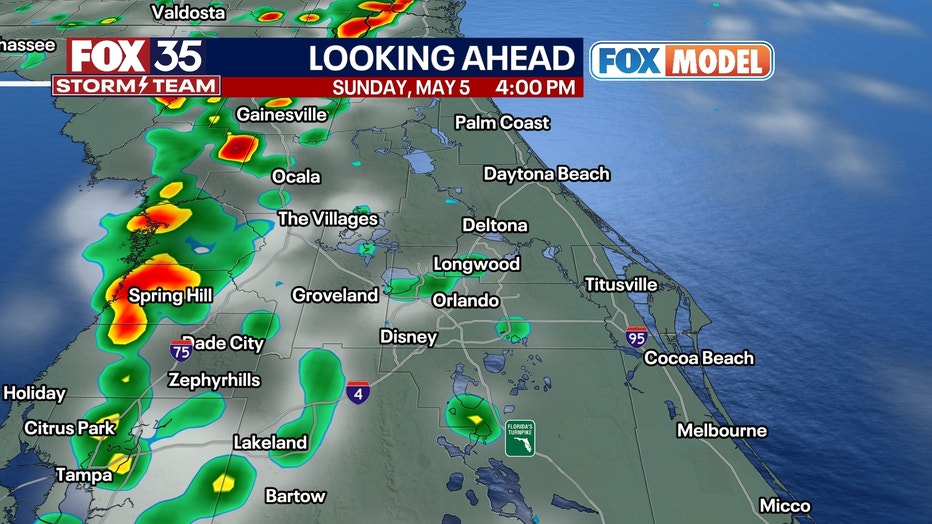
Looking ahead to next week, a ridge of high pressure building around the Gulf, Caribbean, and Florida regions will bring a significant increase in temperatures. The mid to upper 90s are forecast for Wednesday through Friday, with coastal areas experiencing highs in the high 80s to low 90s.
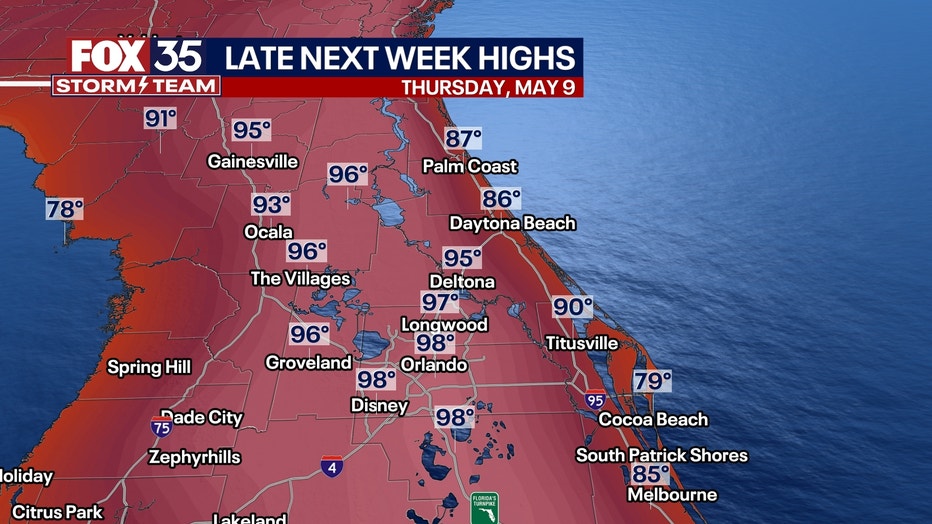
However, relief from the sweltering heat may be on the horizon. A cold front is expected to move in around Mother's Day, providing a temporary respite from the unusually high temperatures.
Meanwhile, concerns over worsening drought conditions persist, with further deterioration anticipated before any signs of improvement in the next two weeks. Monitoring of agricultural impacts and water issues remains a priority.
Rapid onset droughts present a stark departure from the gradual onset of typical drought conditions. Unlike their slower-developing counterparts, rapid-onset droughts strike swiftly and can catch communities off guard, leaving little time for preparation. Brush fires can break out more easily, and water-deprived meadows and lawns can go dormant in just days.
Crops can be stressed by intense heat and dry weather unless watered intensely. Research has shown that in Florida's storied history of sinkholes, in dry times, when the aquifer is tapped for industrial irrigation applications like agriculture, cavities can form in the porous limestone, leading to areas of ground collapsing under its weight, filling that cavity.
In other cases, underground limestone dissolves as water flows toward pumps, creating new voids that eventually collapse, often with little warning. Sometimes, this can happen within weeks of the drought or be delayed to several months later, even when the rainy season has begun.
Ever wonder why we have so many little ponds and lakes in Central Florida? Our region has earned the moniker of the "Sinkhole Alley." Often, once they form, they fill up with water. One notable example is the Winter Park sinkhole of 1981, which swallowed a portion of a luxury resort and forced the evacuation of nearby homes. It happened May 8, 1981 (the same time of year that we're in now) and is now known as "Lake Rose."
It happened during an extended drought when the Florida aquifer dropped nearly 40 feet! In 2013, a massive sinkhole in Seffner that March, tragically claimed the life of a man when it swallowed his entire bedroom while he slept. These incidents underscore the unpredictable nature of sinkholes in Central Florida, where the very ground beneath residents' feet can suddenly give way, causing widespread damage and, in some cases, loss of life.
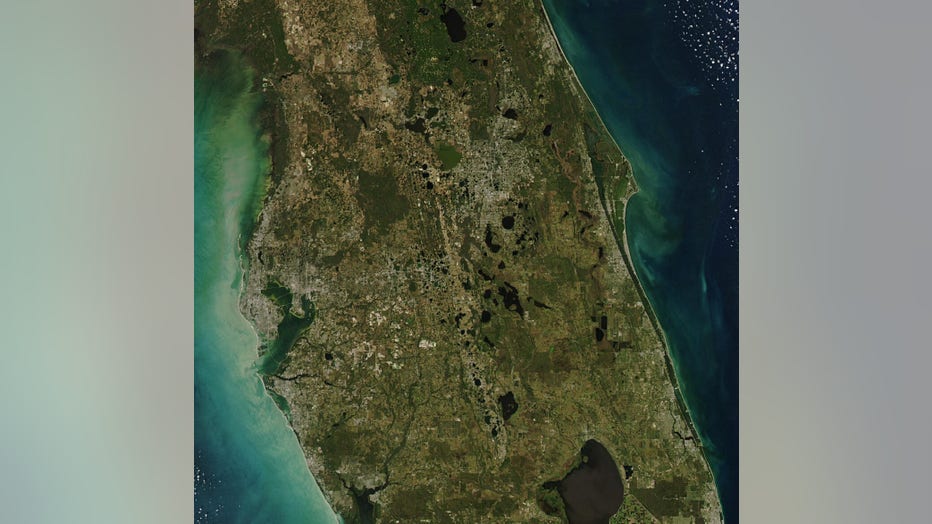
As development continues in the region, the threat posed by sinkholes remains a constant concern. Who'd think talk of drought could be so impactful? For Central Florida, it is. Now, the good news is that the rainy season typically gets going in about 3–4 weeks from now, alleviating concerns about dry weather.
Meanwhile, next week will mark the start of the true warm season and gently push us closer to the start of the rainy season, either late this month or early next month, as it warms our waters.
Orlando Hour-by-Hour Forecast

Orlando 7-Day Forecast


